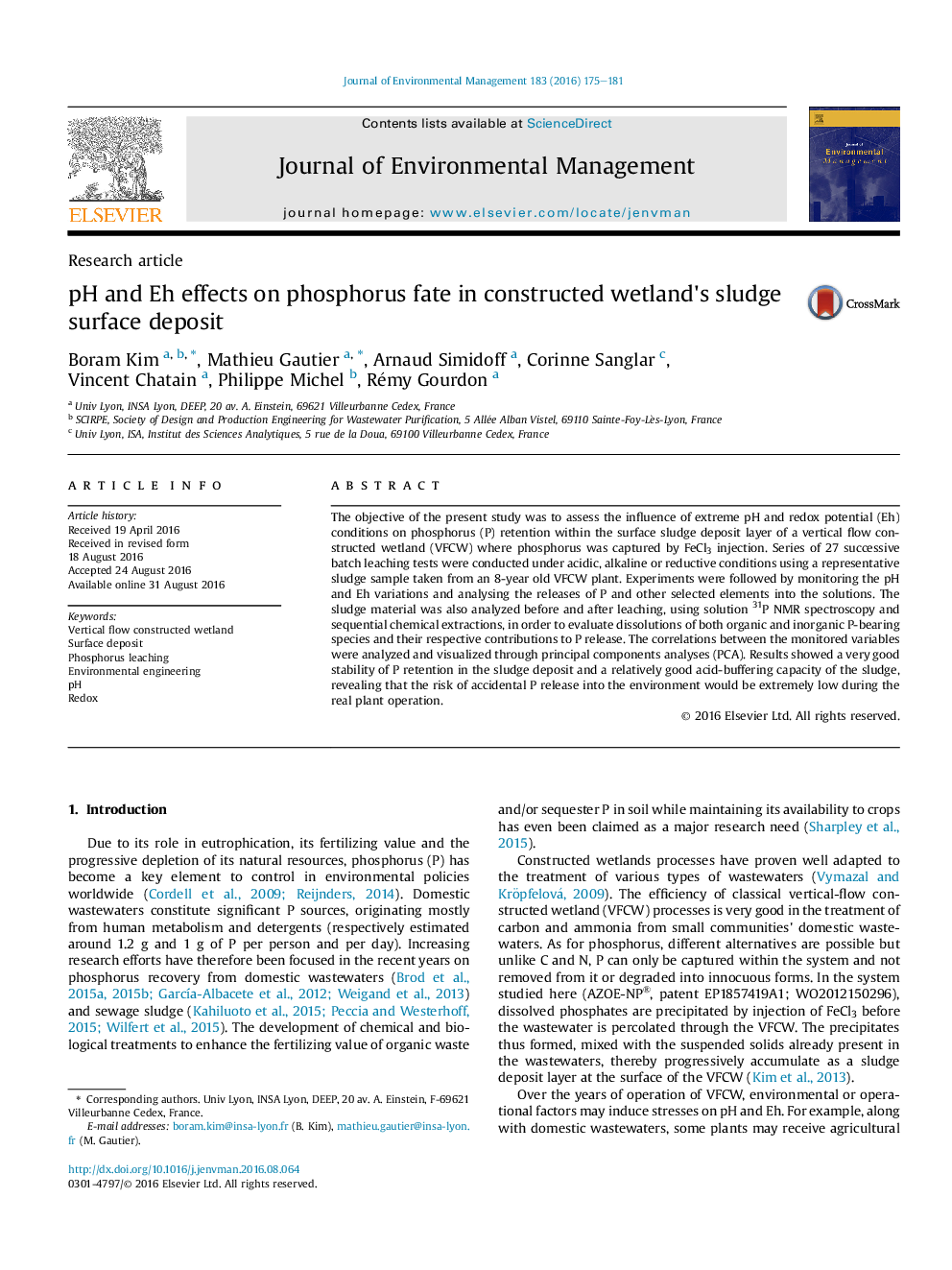| Article ID | Journal | Published Year | Pages | File Type |
|---|---|---|---|---|
| 5117301 | Journal of Environmental Management | 2016 | 7 Pages |
â¢Influence of pH and Eh on P release from sludge was studied by successive leaching.â¢Multi-parameter (P, Fe, Eh, pH, etc.) correlations were revealed by PCA.â¢Leaching effect on P distribution within sludge was determined by P fractionation.â¢The sludge taken from a VFCW showed a relatively good pH buffering capacity.â¢Significant P release from sludge was observed only under extreme conditions.
The objective of the present study was to assess the influence of extreme pH and redox potential (Eh) conditions on phosphorus (P) retention within the surface sludge deposit layer of a vertical flow constructed wetland (VFCW) where phosphorus was captured by FeCl3 injection. Series of 27 successive batch leaching tests were conducted under acidic, alkaline or reductive conditions using a representative sludge sample taken from an 8-year old VFCW plant. Experiments were followed by monitoring the pH and Eh variations and analysing the releases of P and other selected elements into the solutions. The sludge material was also analyzed before and after leaching, using solution 31P NMR spectroscopy and sequential chemical extractions, in order to evaluate dissolutions of both organic and inorganic P-bearing species and their respective contributions to P release. The correlations between the monitored variables were analyzed and visualized through principal components analyses (PCA). Results showed a very good stability of P retention in the sludge deposit and a relatively good acid-buffering capacity of the sludge, revealing that the risk of accidental P release into the environment would be extremely low during the real plant operation.
Graphical abstractDownload high-res image (387KB)Download full-size image
